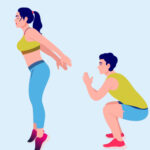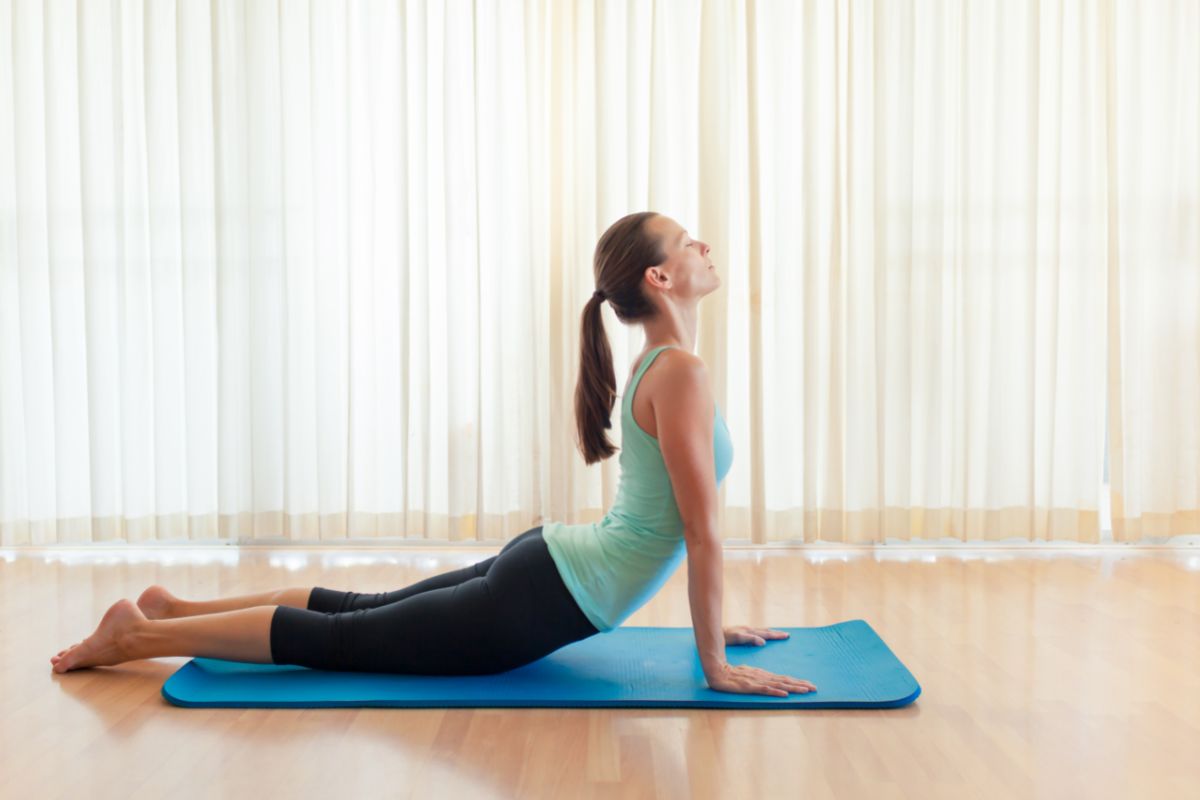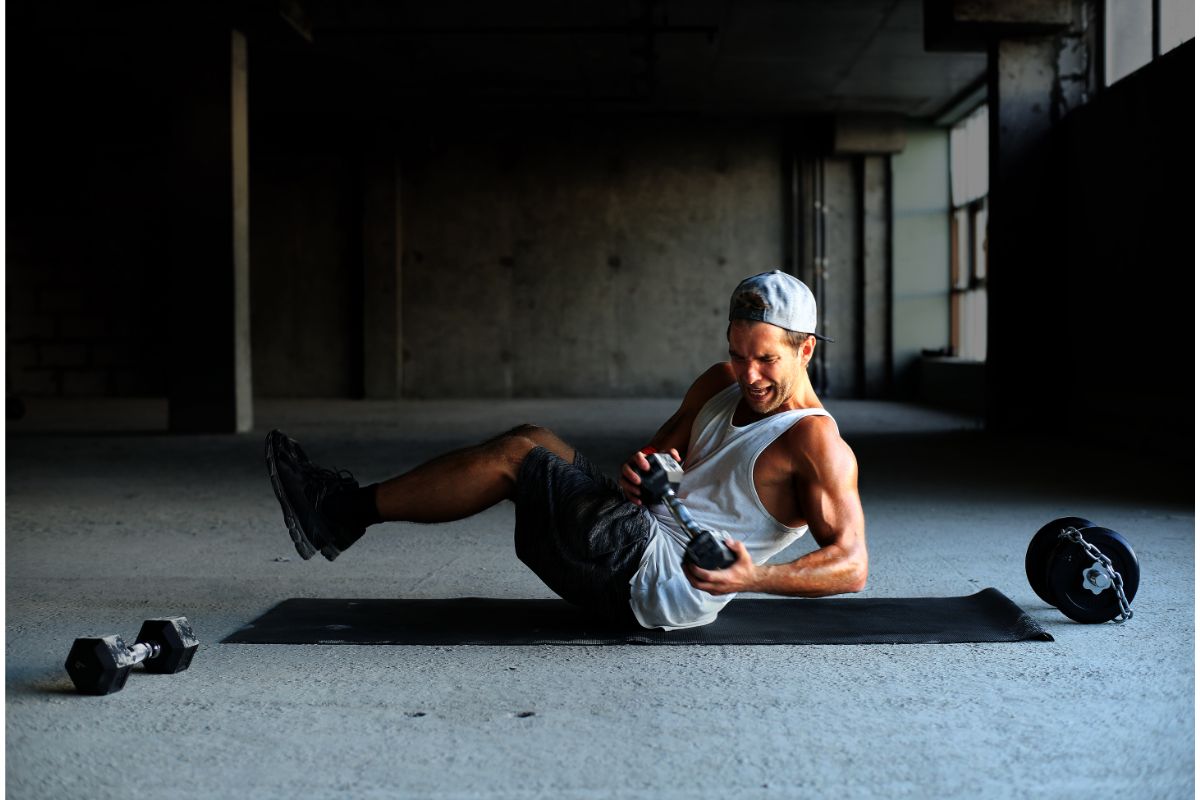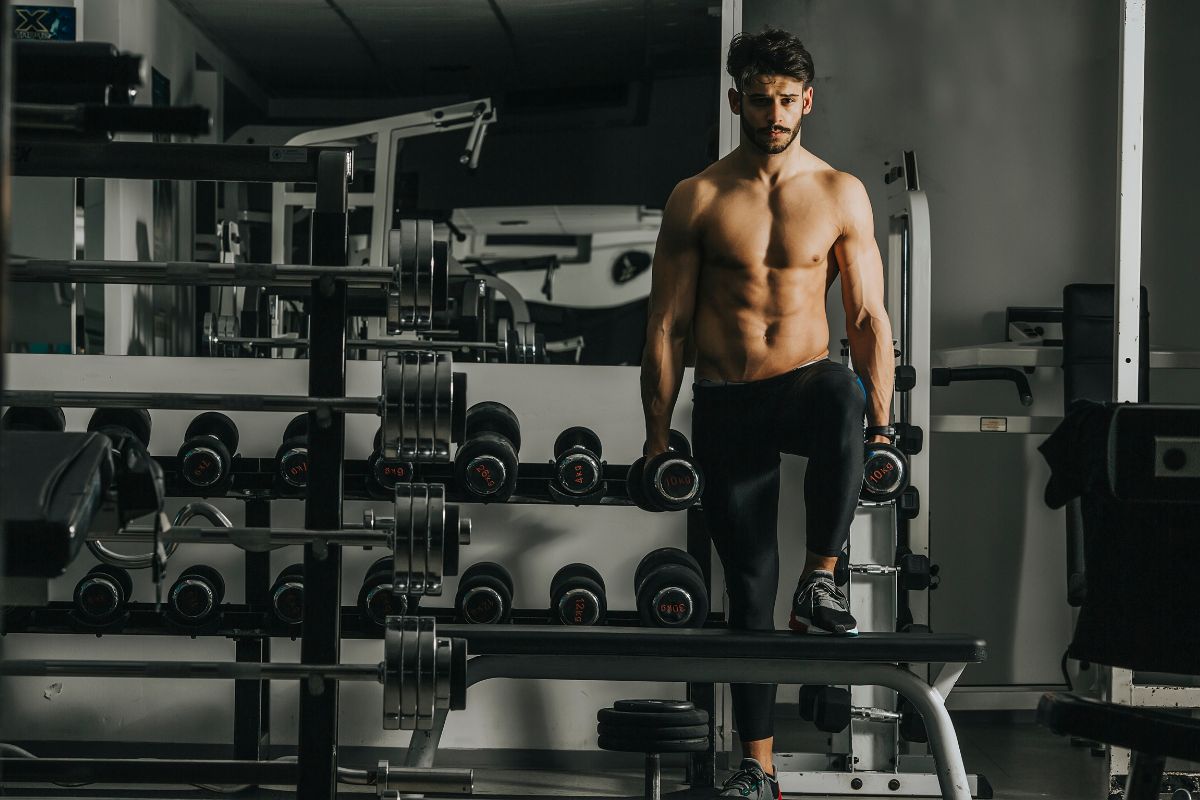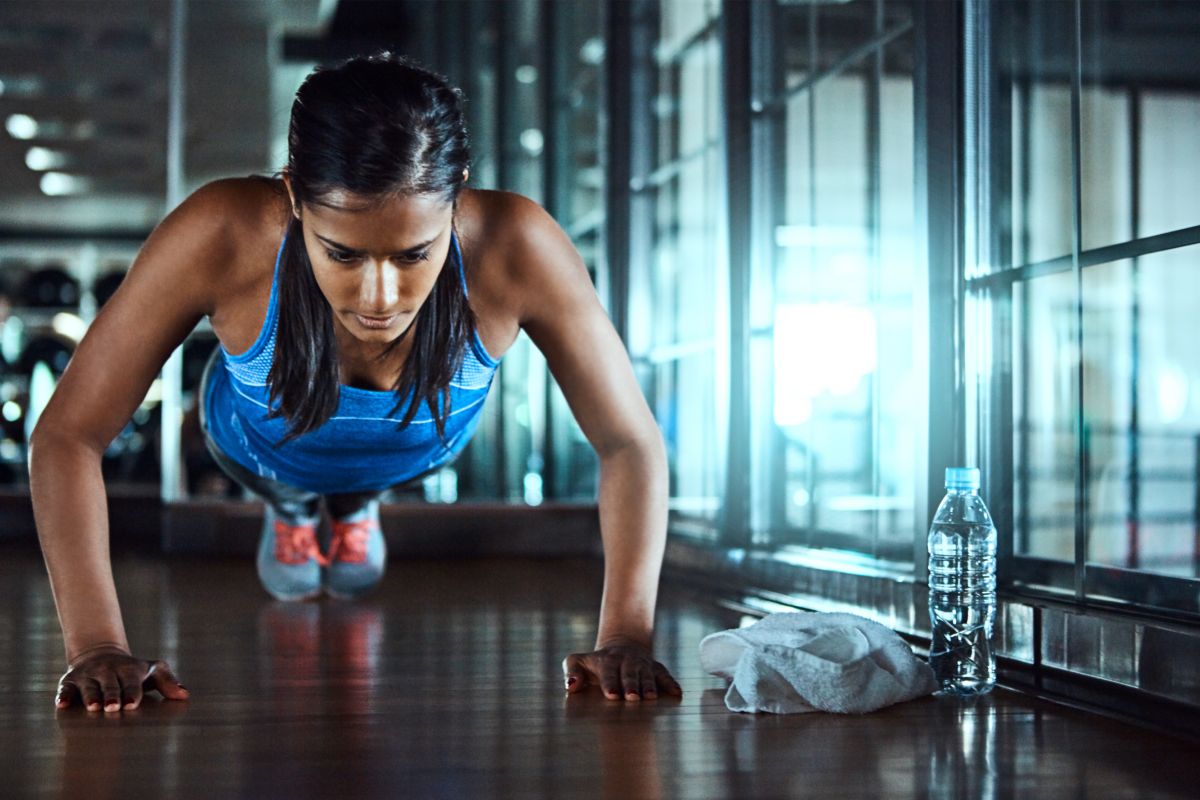Last Updated on August 15, 2022 by TJ Daniels, Certified Personal Trainer
Barbell training is one of the best ways to build muscle mass, lose weight and enhance your overall strength.
This is because barbells can be loaded with kettlebells and dumbbells to provide you with the utmost support during strength training.
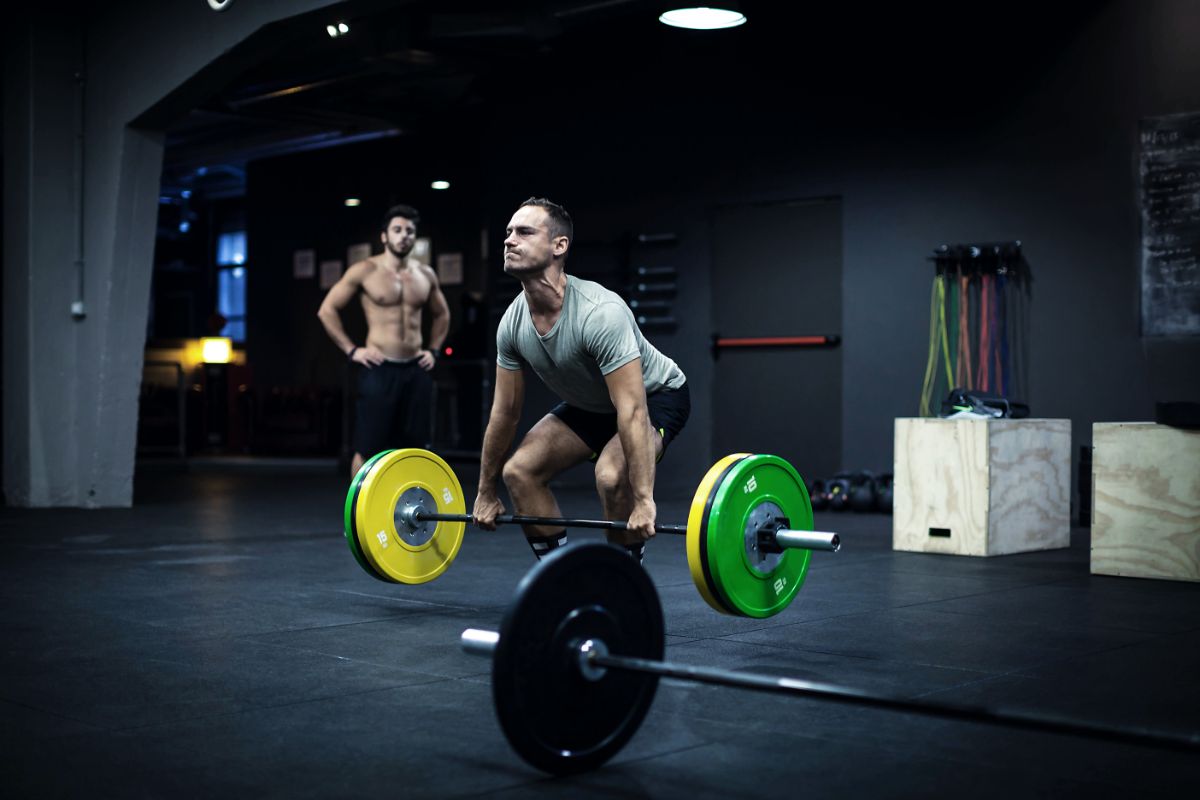

The barbell is entrenched within the history of strength sports and can be used during presses and squats.
It can also be loaded on your front or back, and you are even able to jump while holding it.
There are many exercises today and thus, knowing which specific exercise to engage in can be overwhelming, particularly if you are new to strength training.
This is why we have outlined the seven best barbell exercises you can challenge yourself with, alongside the benefits of these exercises.
Barbell Back Squat
Step beneath the barbell and establish a strong foundation, flexing your core in order to lift the barbell from the squat rack.
Then, grip the barbell to allow for maximum shoulder mobility and place your elbows under the bar.
Then, set it high on your upper back before unracking it and stepping backward.
To create tension and keep the bar stable on your back, pull the bar down into your shoulders.
Remember to ensure that you keep your chest up and breath deeply before squatting down to a depth that suits you, targeting a 90-degree angle in your upper and lower legs. Pause, and drive your feet into the floor raising the barbell. Make sure you are keeping your weight back in your heels and not on your toes during this exercise.
Benefits Of Barbell Back Squats
- Barbell back squats will improve your overall leg strength. Squats are easily the best exercise anyone can do for leg development.
- Engaging in barbell back squats helps to increase the power in your lower body. Studies have also shown a correlation between barbell back squats and the height that you will be able to jump.
Barbell Front Squats
To do a barbell front squat, you will need to assume an efficient front rack position.
You can do this by placing the barbell high onto the shoulders in front of you and ensuring that it is supported by the upper chest and shoulders.
Your shoulders should remain down with your chest up before you take three steps backward, away from the rack.
Then, squat down, keeping your back in a neutral position while ensuring that you do not lean forwards excessively.
Once you have reached this bottom position and your 90-degree angle with your legs, you should then push through the heels of your feet, bringing yourself back up to a standing position. Make sure to maintain a lengthened torso and keep your chest high and forward during the exercise.
Benefits Of The Barbell Front Squat
- Having a barbell position that is front-loaded ensures that less pressure is placed on the spine in comparison to back squats.
- Front squats will also include qualities that are similar to olympic lifts as the clean and jerk movements in olympic lifts will include a front squat.
- In this sense, this move will reinforce strength in the upper back and enhance your posture as the weight lifter will need to consciously squeeze their upper back muscles to ensure that the barbell remains in place.
Barbell Rack Pull
First, set the barbell into the squat rack, positioning it either below or above the knees.
Then, assume your normal deadlift stance and grip the barbell. Grip it with an overhand should-width style of grip and squeeze your arms to your sides, focusing on not letting the armpits “open up”.
Place your shoulders and chest backward and pull up until you have reached lockout.
Slowly lower the barbell back to the starting position before repeating the process.
Benefits Of The Barbell Rack Pull
- Your deadlift lockout will be strengthened due to you lifting from a partial range of motion and transferring more weight during the process.
- Your grip strength will be improved alongside your upper back strength.
- Since you have the rack in front of you, it is easier to bring yourself to failure since you can just rack the weight when you get tired.
Barbell Romanian Deadlift
First, stand up tall with your spine elongated and your feet hip-width apart.
Then, grip the barbell using an overhand grip positioned in front of your thighs.
Ensure that your chest is facing up and your shoulders are down before taking a deep breath and hip-hinging until the barbell is positioned below the knees.
Ensure that you keep the barbell as close to your body as possible.
Then, pause briefly and exhale using your hamstrings/glutes to place you back into a standing position before resetting and repeating.


Benefits Of The Barbell Romanian Deadlift
- This exercise improves hypertrophy of the lower back and enhances your hamstrings after engaging in regular deadlift activities.
- In a similar manner to rack pulls, Romanian deadlifts will ensure that your upper back is strengthened while ensuring that you can utilize strength for more conventional forms of deadlifting.
Barbell Bench Press
First, lie flat on your back and ensure that your eyes are underneath the barbell.
Grip the barbell with your hands, ensuring that they are slightly wider than shoulder-width apart and your wrists are in a neutral position.
Then, remove the weight from the rack and hold with your arms outright, making sure you have a good grip and can handle the weight.
Finally, bring the bar slowly downwards onto your chest while breathing in and keeping your feet flat on the floor and your back flat on the bench.
Ensure that you aren’t arching your back during this exercise as that is the most common form flaw when doing this exercise.
Benefits Of The Barbell Bench Press
- This exercise increases your overall strength and the hypertrophy of the chest, shoulders, and triceps.
- Useful to carry out powerlifting sports.
- Bench press will help you to enhance your pushing capabilities.
Barbell Bent Over Rows
First, place a loaded barbell onto the floor and stand with your feet approximately hip-width apart (slightly more if needed).
Then, hinge down onto the barbell and grab it with a grip that is shoulder-wide.
Then, bring your barbell upwards to knee level ensuring that your back remains strong with your torso bent at approximately 45 degrees.
Finally, pull the barbell and position it between your sternum and navel.
Pause to breathe before lowering the barbell back down and repeating the process.
Benefits Of The Barbell Bent Over Row
- Strengthens the upper back, adding mass while enhancing the lats and erector spinae.
- Enhances hip hinge mechanisms and will benefit many other lifting activities.
- Improves your overall posture and bodily control.
Barbell Push Press
First, stand in front of your loaded barbell and position it to approximately chin height using a power rack.
Grab the bar using a grip that is just wider than the width of your shoulders.
Then, engage your abs and dip your knees slightly, below suddenly pushing the bar overhead.
Catch it onto your chest carefully and repeat the process.
Benefits Of The Barbell Push Press
- Using leg extensions when pushing the bar up will drive strength and muscle-building power to your glutes and quadriceps.
- This process allows you to use more weight than engaging in an overhead press.
- This exercise is able to be carried over to olympic lifts and other deadlift activities.
Conclusion
To conclude, the key advantage that the barbell has over other forms of equipment is that it can strengthen different parts of the body by moving weight accordingly over your center of balance.
For instance, when you are performing deadlifts, any deviation from the path will result in missed lifts due to an ill-formed technique whereas using a barbell removes the chance of this happening.
In this sense, using a barbell enables you to incorporate core human movements like the overhead reach, hip hinges, and squats using heavier weights which allows you to become gradually stronger.
- How To Start HIIT Workouts [Beginner’s Guide] - May 18, 2023
- How To Sneak A Workout In While Taking Care Of Your Baby - March 17, 2023
- How To Build Your Chest With Dumbbells [Guide] - February 9, 2023

